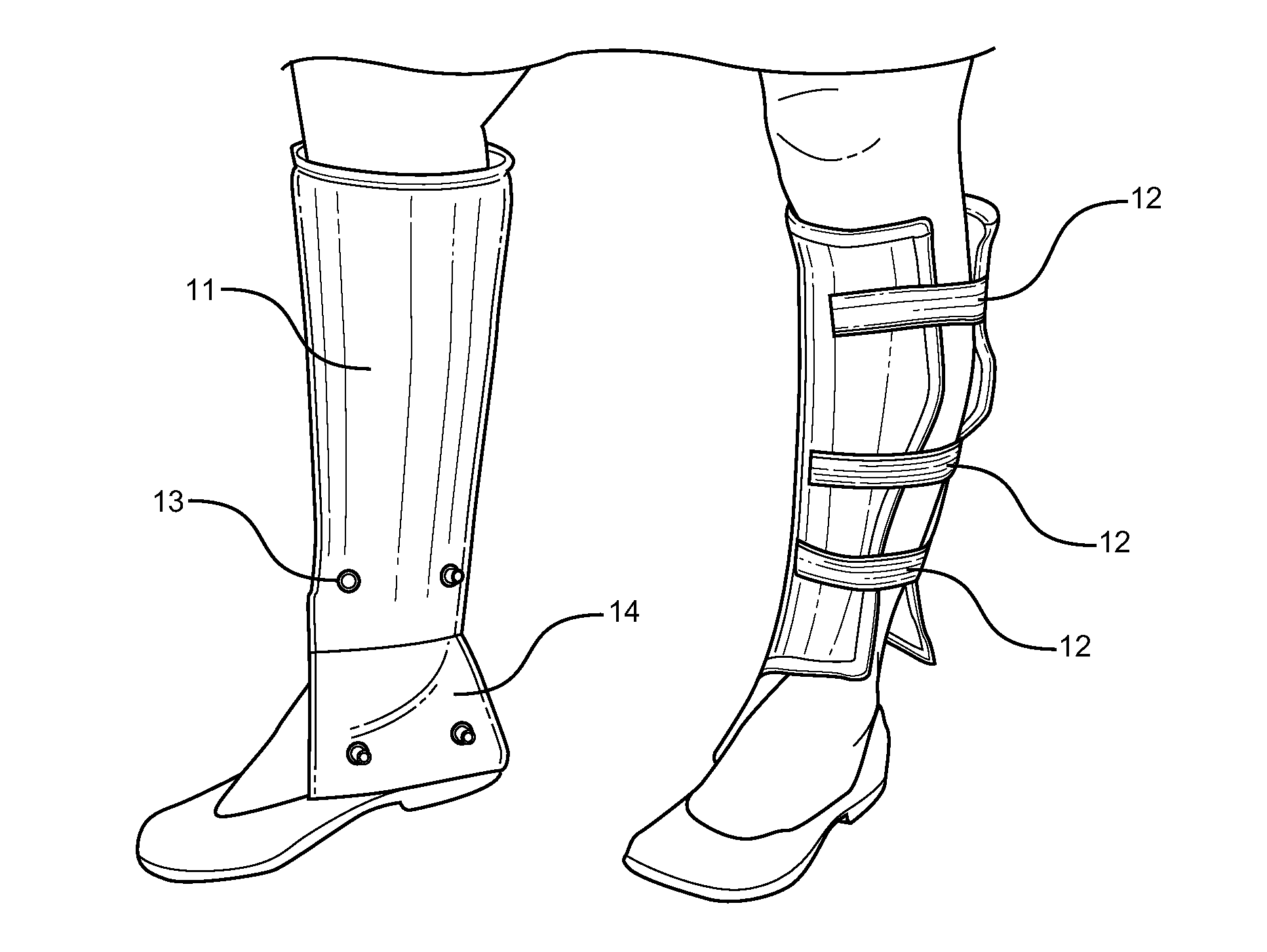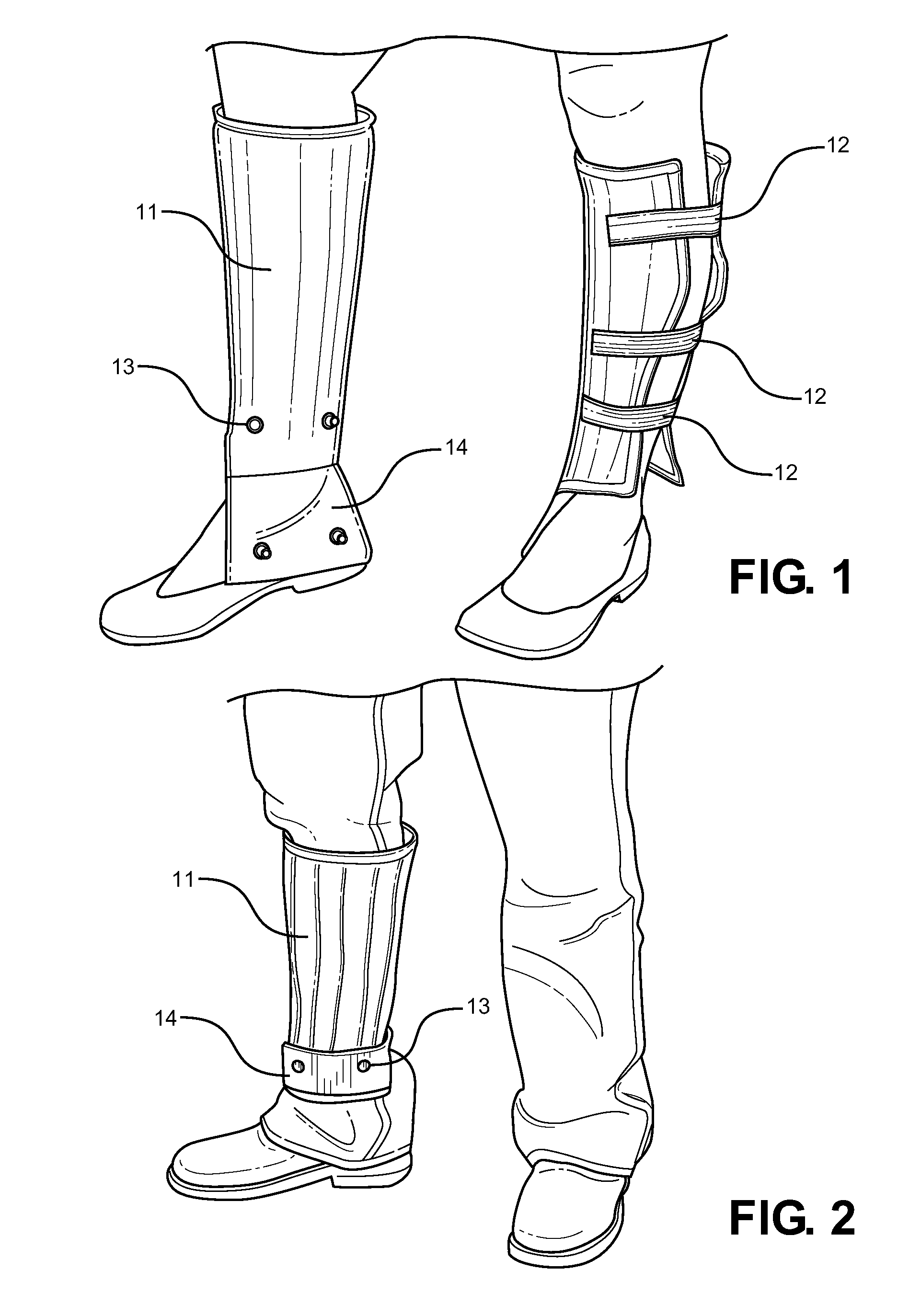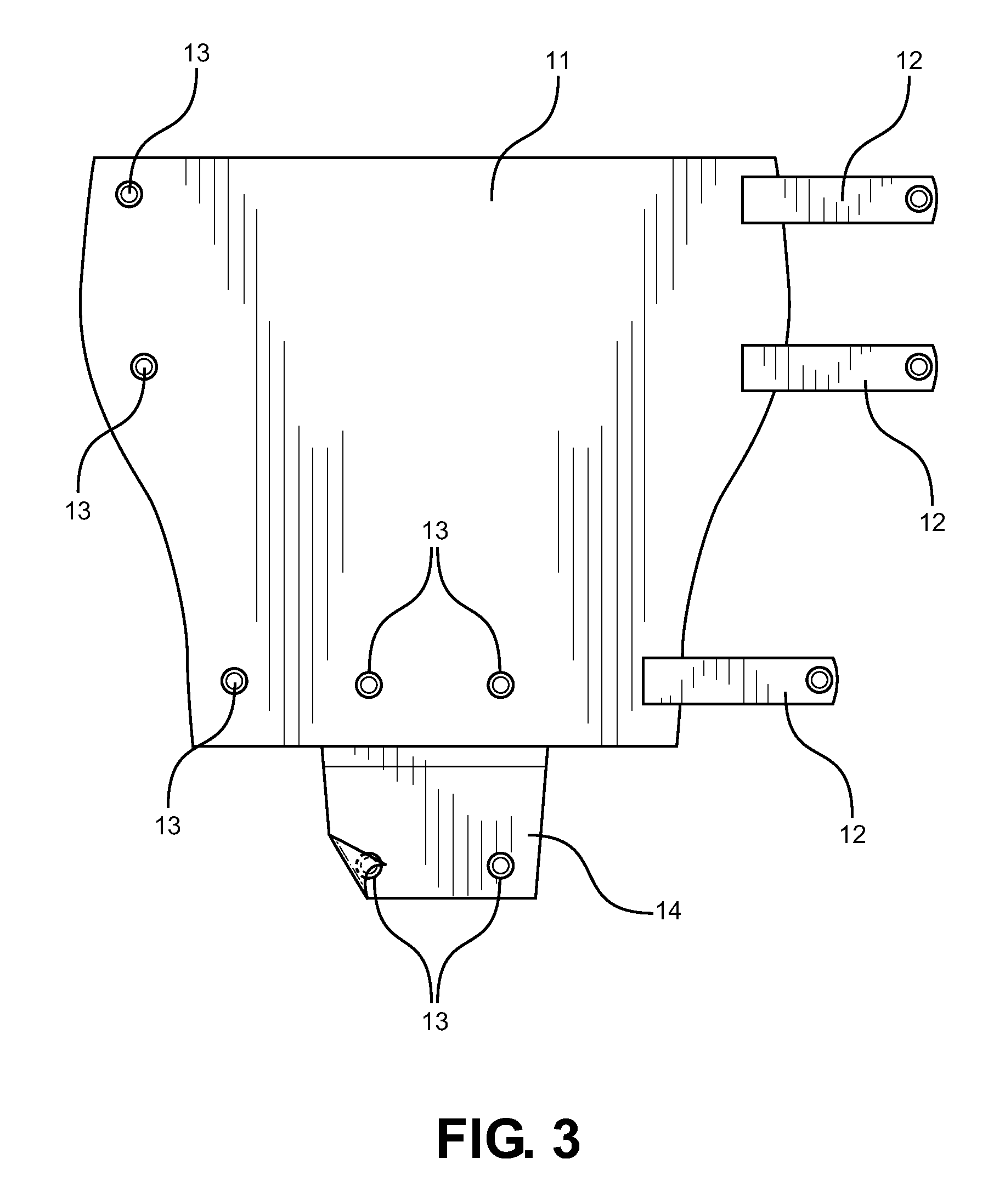Calf and Ankle Thermal Protection Device for Motorcyclists
- Summary
- Abstract
- Description
- Claims
- Application Information
AI Technical Summary
Benefits of technology
Problems solved by technology
Method used
Image
Examples
Embodiment Construction
[0019]Referring now to FIG. 1, there is shown a perspective view of the present invention in a working position with an ankle guard 14 extended. The calf guard 11 is secured to the shin of the user via adjustable elastic straps 12 and corresponding securing snaps 13. The inherent elasticity of the straps 12 provides fitment for varying sized calf sizes and leg sizes. The exact length of the calf guard 11 depends upon the user and the size chosen therefor. Its construction comprises a bi-layered material of outer fabric and an inner thermal protective layer. The outer fabric may be adorned with any ornamental features or designs as desired, while providing a material that is capable of withstanding considerably high temperatures and contact without burning, singing or igniting. The inner thermal layer provides the highest level of thermal resistance within the bi-layer sandwich construction, reducing heat transfer through the guard 11 when in proximity or contact with a heat source. ...
PUM
 Login to View More
Login to View More Abstract
Description
Claims
Application Information
 Login to View More
Login to View More - R&D
- Intellectual Property
- Life Sciences
- Materials
- Tech Scout
- Unparalleled Data Quality
- Higher Quality Content
- 60% Fewer Hallucinations
Browse by: Latest US Patents, China's latest patents, Technical Efficacy Thesaurus, Application Domain, Technology Topic, Popular Technical Reports.
© 2025 PatSnap. All rights reserved.Legal|Privacy policy|Modern Slavery Act Transparency Statement|Sitemap|About US| Contact US: help@patsnap.com



